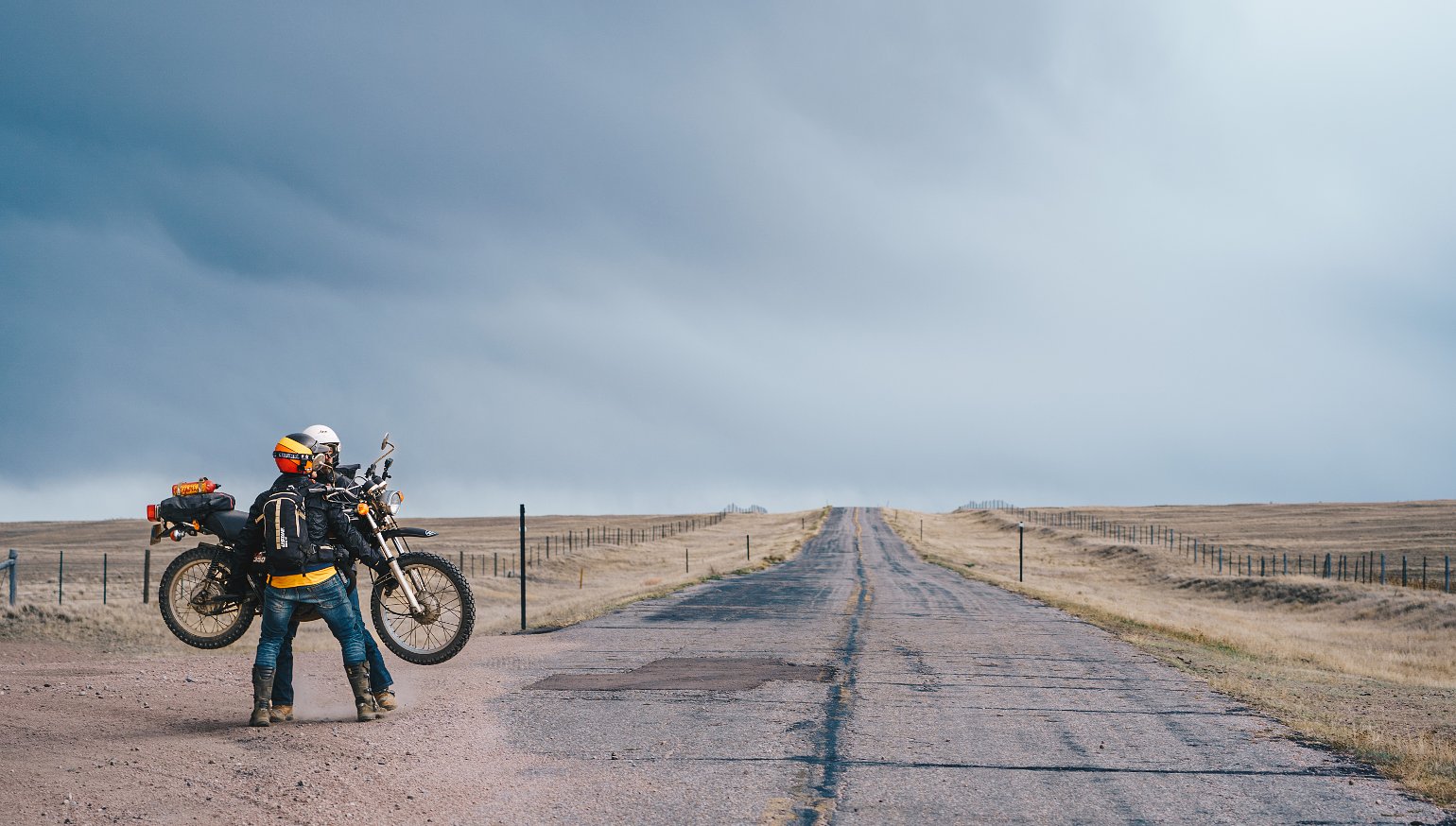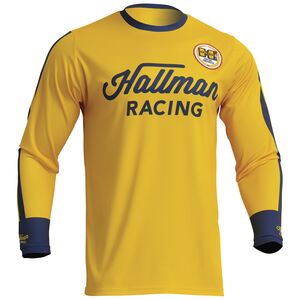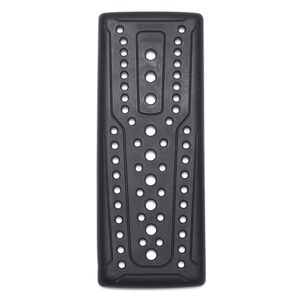At some point in your childhood, you may have played the “floor is lava” game. In case time has blurred the rules, they’re quite simple: Get across a room without touching the carpet, linoleum, or hardwood, because, well, the floor is lava.
A larger, more complex, yet equally ridiculous version of the “lava” challenge is more or less what Zack and I did for the latest episode of CTXP. Our objective was to traverse an entire U.S. state without our tires touching pavement. With winter closing in, smart video hosts would have chosen a small, southerly commonwealth and fast, modern machines, with a turn-by-turn Rever track queued up. We chose Wyoming, 50-year-old dual-sports, and a paper map.
The old bikes were a long time coming, as Zack and I have been talking about doing a throwback trip on retro enduros for a while now. The “something from the early days of dual-sports” concept quickly solidified into riding the original dual-sports, namely Yamaha’s watershed DT-1, introduced in 1968, and Honda’s suave XL350, launched in 1974. These machines are the first ground-up efforts to meld genuine on- and off-road capabilities, marking the base of what has grown into a girthy branch on motorycling’s phylogenetic tree.

As for Wyoming, its size and latitude were intimidating, but just as the living room offers an abundance of upholstered safe havens to clamber over, Wyoming has all the ingredients for a pavement-free excursion. For starters, it’s America’s least-populous state, yet it occupies the 10th largest mass of largely flat, public land. On top of that, of the approximately 12,000 miles of road within Wyoming, some 10,000 miles remain unpaved, and our map was pretty clear about what was what.
Setting off from the eastern border of Wyoming into a stiff, frigid headwind, that clarity lasted approximately 10 miles. First, a supposed shortcut between long, arrow-straight gravel boulevards abruptly terminated in a corn field. Then, our path crossed a road that was designated as dirt on the map, but turned out to be recently rolled blacktop.

Agitated, we rode the shoulder north and then south for several miles looking for an acceptable path over or under, a move we were destined to repeat numerous times in the week to come. Finally, we resigned ourselves to carrying the bikes across the road, awkwardly and with straining backs, which was another move we would repeat more times than we care to count.
Hoisting the bikes wasn’t unexpected — we had over 600 miles ahead of us, which included several unavoidable road crossings, and we were committed to our no-pavement rule — but this early betrayal by our navigation system was concerning. The good news was that the lifting chased away the cold that had permeated our limbs, and other than being heavier than we’d prefer, the DT-1 and the XL were everything we’d hoped for.

True, the elevation of the high plains made the XL choke on excess fuel at cruising throttle and its shocks, exercised vigorously for the first time in who knows how many years, were rapidly ejecting their oil, but the old Honda started first kick and felt big, luxurious, and fast on the well-graded roads. The Yamaha may have vibrated like a palm sander under my butt and refused to remain in third gear, but it was light and nimble, and it smelled great, even if some of the aroma came from hot Motul 10W-40 leaking out of the gearbox rather than Maxima K2 puffing out of the exhaust pipe.
We fell short of our 120-mile goal for the day, covering just 90 miles before dusk fell and we decided to shelter from the wind beneath a wooden bridge. The next day was even worse; we made it just 36 miles before getting hemmed in by the lava field of Laramie.
We burned hours looking for avenues around the city, but it was no use. Zack and I were frustrated, since just a few minutes on pavement would lead us back to dirt-road freedom. Instead of compromising our principles, though, we abandoned the bikes in a bush, walked across a highway to a hotel, and spent the evening studying the map and the landscape via Google Earth, plotting and rehearsing our directions and backup options like a Special Ops team preparing for a mission.

We left early the next day, backtracking east so we could head south and finally turn west and get the hell away from Laramie. We were rewarded with well-graded, flowing dirt roads through deciduous forests that were just releasing their leaves. The flatness of the high plains gave way to ridges and canyons. We’d made it to the foothills of the Rockies.
Our next big obstacle was Interstate 80, which we were able to ride under by threading the strip of sand along the paved underpass. We got under the next major road in a culvert, and let ourselves through a barbed-wire gate and then into a livestock tunnel to pass beneath another large road. As ridiculous and goofy as our self-imposed mandate was, we’d developed a system, and now had relatively efficient techniques for addressing paved driveway aprons, metal cattle guards, and other obstacles most people wouldn’t think twice about riding over.
As it turned out, it wasn’t the man-made hurdles that threatened the success of the trip, but the natural ones. Snow in the beautiful Medicine Bow National Forest slapped us on the ground numerous times, bruising elbows and breaking levers. At lower, warmer (read: above freezing) elevations, progress was foiled by miles of the stickiest, slickest, most treacherous mud we’ve ever experienced. The DT-1 soft-seized repeatedly due to the effort, and I began to hope it would lock up for good so we could pull the plug on this torturous trip. We soldiered on, only to have the XL’s chain jump a tooth and lock solid, the upper and lower rung as tight as guitar strings.

Midway across the state, we were days behind schedule, physically exhausted, and emotionally drained from the navigational and mechanical drama. Arriving at an unavoidable paved road an hour after sunset, we were facing a dangerously cold night in our tents and an impossible pile of miles to get to Wyoming’s western border. Defeated, we loaded the bikes into the back of the Jeep and headed for a hotel.
For the first time in almost a decade of audacious adventures, we had given up. Spenser assured us we had ample footage for an episode, and then the cab of the truck was quiet as it hurtled down Interstate 80. Then, as the warmth began to thaw our brains, a suggestion: What if we drove ahead to get back on schedule, then pushed on? We mulled it over, and agreed that we would all regret giving up outright. Driving was definitely cheating — like a kid throwing magazines on the carpet to steal a few steps to the recliner — but it meant the trip could go on. Plus, of all the absurd obstacles of the trip, the biggest was still ahead of us, and we’d scheduled help negotiating it.

Flaming Gorge is Wyoming’s largest reservoir. It stretches north out of neighboring Utah into Wyoming’s interior, and there are no bridges spanning its depths, certainly no unpaved ones. To cross it we considered renting a boat, but everything buoyant had already been shrink wrapped for the season. Everything except the patrol boats of Sweetwater County Sheriff's Office, and Sergeant Powell figured ferrying two bikes across the gorge was good practice for transporting or retrieving equipment.

Safely on the other side of the gorge, it finally felt like Wyoming’s western border was achievable. While cam-op Andrew and director Spenser drove hours around the reservoir, Zack and I blasted across the desert as fast as our battered machines would carry us. The DT was now leaking from nearly every engine seal and both fork seals, and the speedometer and tachometer had stopped working. All the oil had evacuated the XL’s shocks days before so Zack was bouncing on undamped springs, but his functional trip meter suggested we’d covered over 500 miles. We had 100 miles to go.

We reconvened with Spenser and Andrew later that evening and spent a pleasant night under the stars beside a campfire, within one of western Wyoming’s vast BLM tracts. That open, public land made the next day’s ride fairly straightforward, and other than a few cattle guards, one road carry, and a deep, soupy culvert crossing, it was easy, enjoyable travel. Finally, at the end of a long, broad valley, the dirt road gave way to pavement, and we tentatively allowed the worn knobs of our Shinko 244s to roll onto it. The transition marked the Wyoming state line. We’d made it.

Unlike a living room on a rainy day, Wyoming doesn’t need imagination or a silly schtick to make it exciting. We had traversed a 10,000-foot mountain range, slogged through snow and mud, removed the XL’s stator cover to free its stuck chain, hitchhiked on a boat, camped in glorious landscapes, and ridden alongside galloping herds of pronghorn aboard two machines that helped shape the world of motorcycling we love so much. No, Wyoming is pretty amazing all on its own.
The fact is, our twisted approach to travel made the trip less enjoyable in the moment, but mixing childish rules with adult-level commitment certainly made for a more memorable and gratifying experience as a whole.































 Riders Preferred Membership
Riders Preferred Membership

























